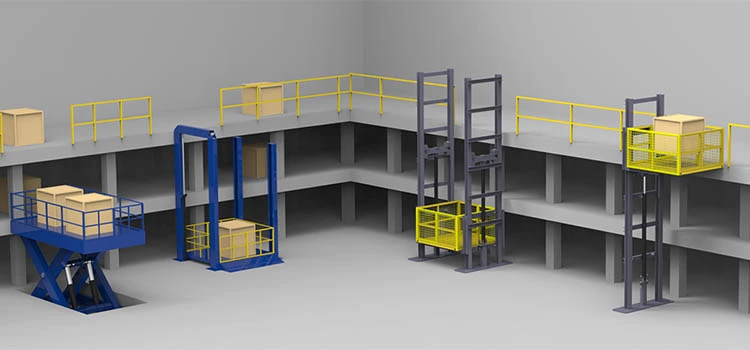Digging Into the Globe of Lifts: Typical Issues Faced by Various Lift Devices
As we navigate via the vertical transport systems of contemporary buildings, lifts stand out as an important element of our daily lives. From hydraulic lifts to grip systems and machine-room-less designs, each lift type comes with its collection of typical problems.
Hydraulic Elevators
Hydraulic lifts, usually preferred for low-rise buildings, use fluid pressure to regulate the motion of the lift cars and truck (lift repair companies). This system involves a hydraulic pump pressing oil right into a cyndrical tube, causing the elevator to relocate the desired instructions. While hydraulic elevators are known for their quiet and smooth operation, they do feature their own collection of typical concerns
One prevalent problem with hydraulic lifts is oil leakage. The seals in the hydraulic system can use out in time, resulting in oil seepage. This not only develops a mess but can additionally influence the elevator's efficiency if left unaddressed. Furthermore, problems with the control system, such as defective shutoffs or a malfunctioning pump, can create disruptions in the lift's activity.
Routine upkeep and timely repair services are important to make sure the smooth performance of hydraulic elevators. By dealing with these common concerns proactively, building owners can reduce downtime and ensure the safety and security and efficiency of their vertical transport system.
Traction Lifts
When taking into consideration upright transportation systems in structures, another usual type besides hydraulic elevators is the grip lift. Traction lifts run utilizing a system of ropes and counterweights that relocate the elevator automobile by grasping onto the hoist ropes. This system permits for smoother and quicker vertical transport contrasted to hydraulic systems.
Among the usual concerns faced by traction lifts is rope wear. The constant movement of the ropes within the traction system can lead to tear and use over time, potentially causing the elevator to malfunction or come to be harmful for usage. Routine examinations and upkeep of the ropes are important to make certain the lift's correct performance and security.
One more concern that traction lifts may encounter is connected to the control system. Troubles with the control system can cause concerns such as erratic activity, hold-ups in action times, or also complete shutdowns. Normal screening and maintenance of the control system are vital to avoid such problems and guarantee the lift's reliability.
Machine-Room-Less (MRL) Lifts

One of the key parts of MRL lifts is the compact gearless traction equipment that is mounted within the hoistway. This equipment successfully drives the lift cars and truck without the need for cumbersome tools found in traditional traction lifts. Furthermore, MRL lifts usually use a counterweight system to balance the car, further boosting their energy performance.
Despite their advantages, MRL elevators might encounter obstacles connected to repair and maintenance because of the constrained room for devices setup. Availability for servicing components within the shaft can be limited, needing specialized training for technicians. Correct upkeep schedules and normal inspections are critical to make sure the ongoing smooth operation of MRL elevators.
Overloading and Weight Limit Issues
Are lifts geared up to take care of excess weight loads efficiently and safely? Overloading and weight limit concerns are important worries in elevator operations. Lift suppliers style lifts with details weight abilities to make sure passenger safety and security and equipment longevity. Going beyond these weight limitations can lead to numerous problems, including mechanical failures, delays, and safety hazards.
When elevators are overwhelmed, it puts extreme pressure on the motor, cords, and other elements, possibly creating breakdowns or malfunctions. Safety and security systems such as sensing units and overload sensors are in location to avoid elevators from moving if they detect excess weight. In addition, surpassing weight restrictions can result in enhanced power usage and deterioration on the lift system.
To minimize overloading issues, constructing managers ought to prominently present weight restrictions in lifts and enlighten owners on the value of adhering to these limitations - lift repair companies. Regular maintenance checks by certified specialists can also aid make certain that elevators are running within safe weight criteria. By attending to overloading and weight restriction problems proactively, building owners can improve elevator safety and security and efficiency
Electric System Failings
Surpassing weight limits in elevators can not only lead to mechanical problems however likewise potentially add to electrical system failures within the lift facilities. Electrical system failings are an essential concern in elevator operation, as they can create unforeseen closures, malfunctions, or also safety threats.
Moreover, power surges or fluctuations in the electric supply disabled platform lifts prices uk can additionally interfere with the elevator's operation, impacting its performance and security. These electric disabled platform lifts prices uk disruptions can harm sensitive elevator elements such as control panels, motherboard, or sensors, leading to system failures. Normal upkeep and inspections are important to identify and address prospective electric concerns without delay, guaranteeing the safe and reliable procedure of lift systems. By sticking to weight restrictions and carrying out regular electric system checks, structure proprietors can reduce the threat of electric failures in elevators.
Final Thought

Hydraulic elevators, often preferred for low-rise buildings, utilize fluid pressure to control the motion of the lift car.When thinking about vertical transportation systems in structures, an additional typical type aside from hydraulic elevators is the traction elevator. Traction lifts operate using a system of ropes and counterweights that move the lift vehicle by gripping onto the hoist ropes. Unlike typical lifts that call for a separate device room to house the tools, MRL lifts integrate most of the parts within the shaft, removing the requirement for a lift repair near me specialized equipment space.In final thought, lifts encounter typical issues such as hydraulic malfunctions, grip system failings, and electrical system problems.